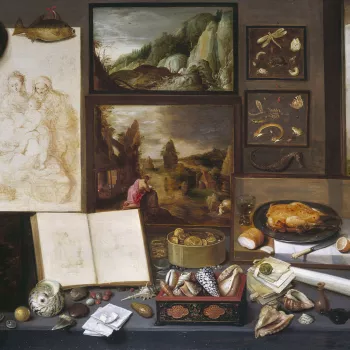Bukelpokal or cup and cover c.1596
Silver gilt | 59.0 x 17.0 x 17.0 cm (whole object) | RCIN 51282
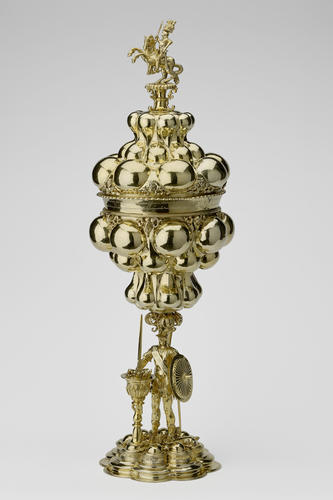
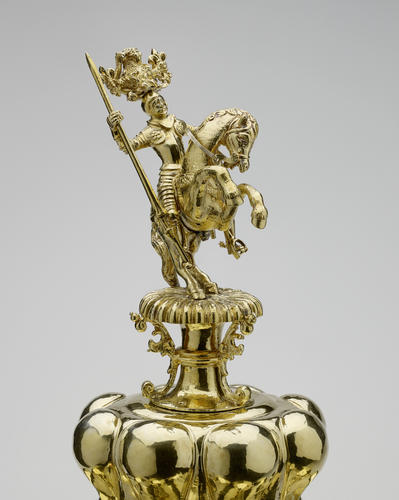
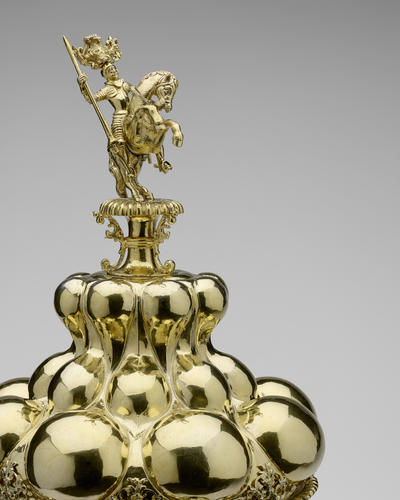




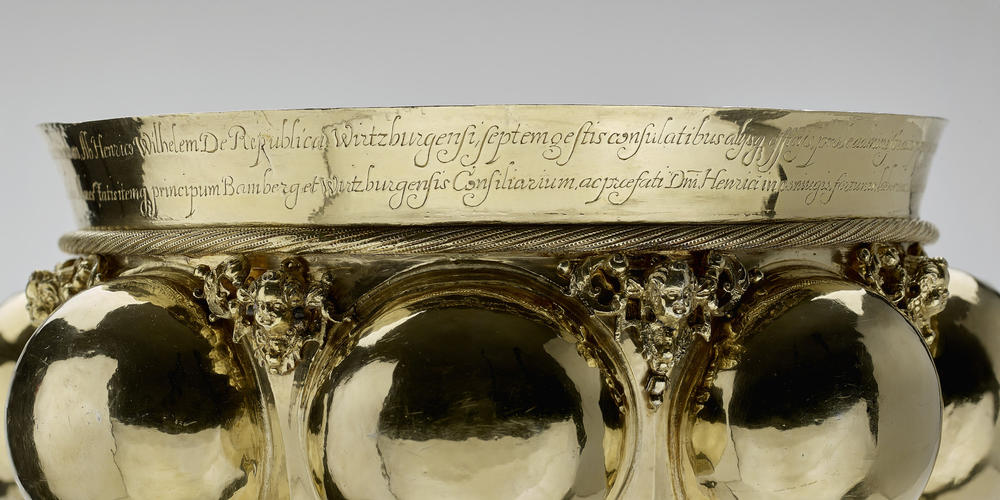
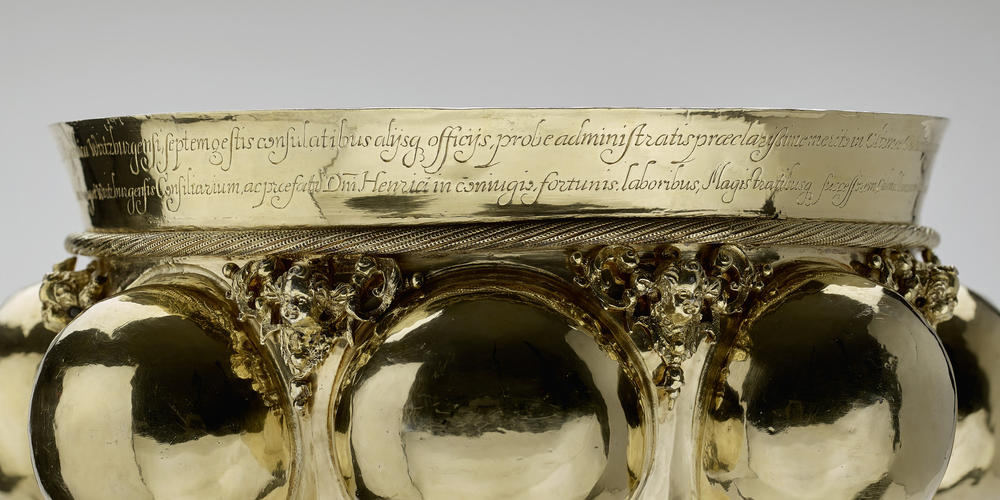

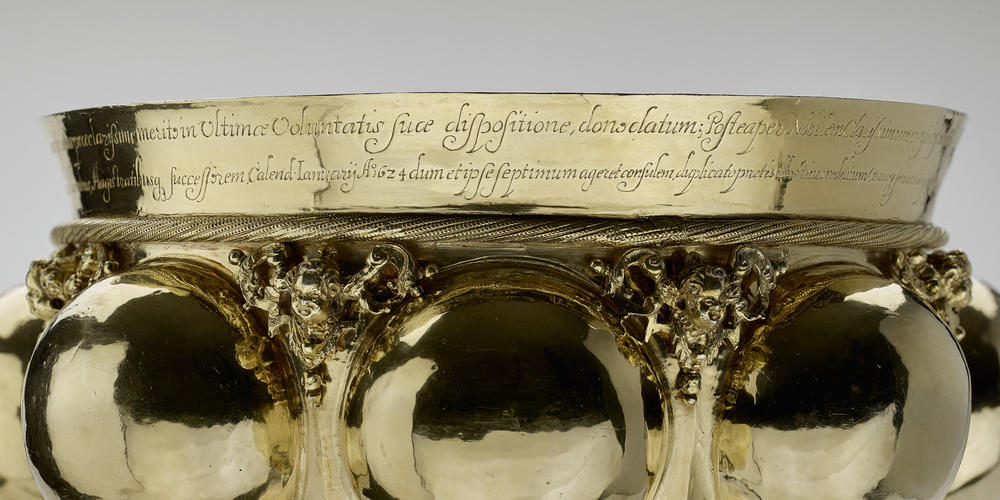
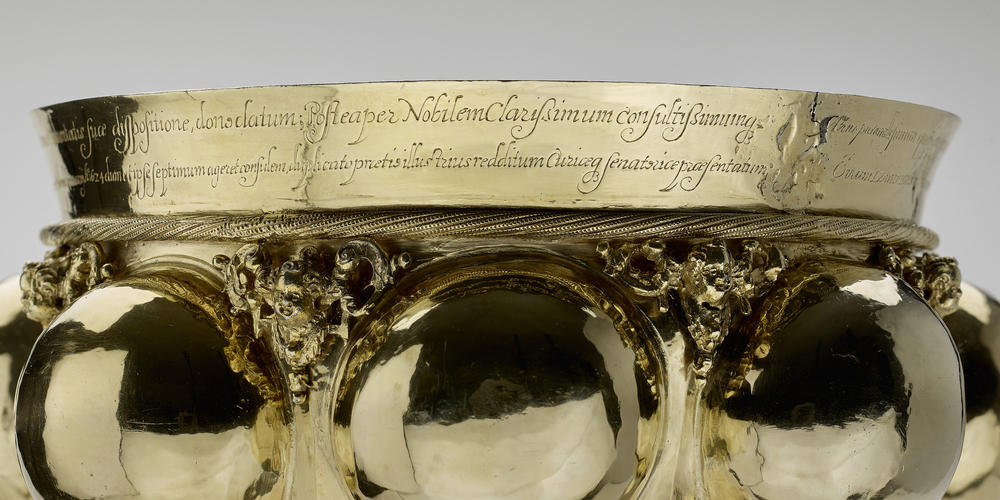
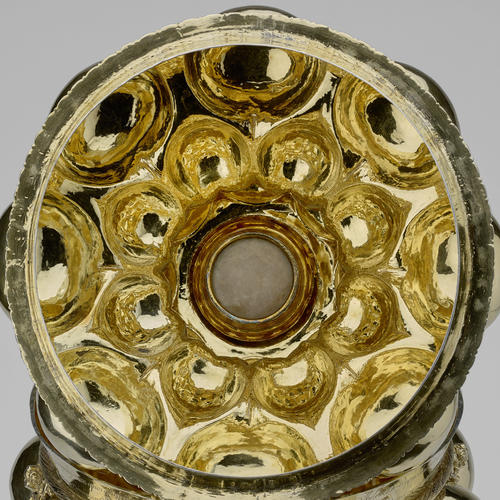

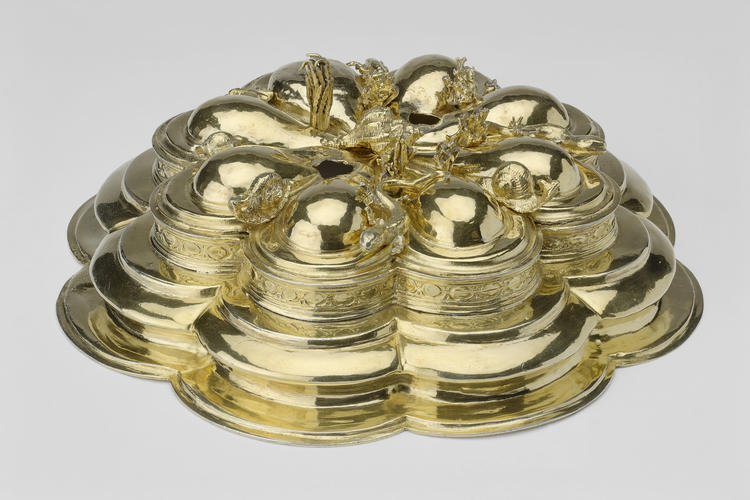
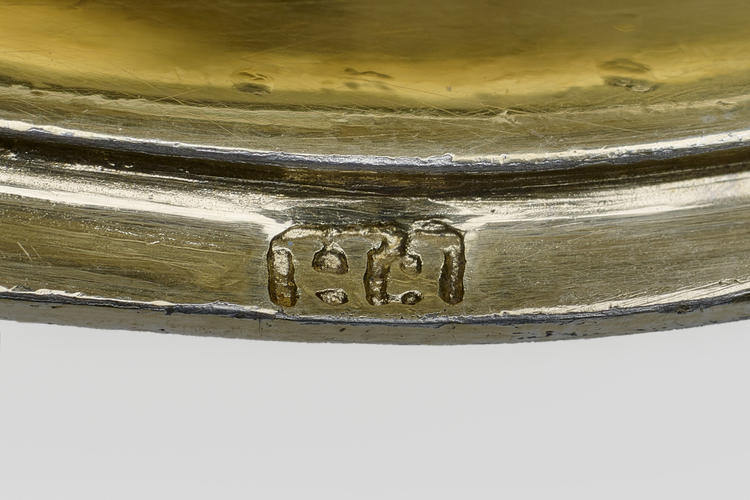
-
The cup has a high lobed foot mounted with small cast animals – lizards, snails, a tortoise, a beetle, and a scorpion – among plants and shells. The stem is formed from the figure of Mucius Scaevola, carrying a gadrooned shield on his left arm and a sword held upright in his right hand, which he plunges into the flames of a brazier standing before him. The plumes of his helmet form the bracket which supports the lobed, waisted cup, which is applied with putti heads between the upper tier of lobes. The rim is engraved with an inscription and has an applied ropework border. The cover has a gadrooned border, a rim of pierced strapwork scrolls, and further scrolls overlay the areas between the lobes, and it is surmounted by the figure of a knight on a rearing horse, a spear in his right hand, the reins in his left, wearing a helmet with a large crest formed as a demi-lion holding fleurs-de-lis in both paws. The horse stands on a gadrooned knop supported on three scroll brackets. Within the cover is a glazed reserve which remains blank.
According to the inscription, the cup was commissioned to celebrate the seventh term in office of Heinrich Wilhelm (d.1596), who acted as Bürgermeister in the city of Würzburg between 1567-8 and thereafter as Oberbürgermeister six times between 1572 and 1594.
Friedrich Hillebrandt was one of the most versatile and accomplished goldsmiths working in the late sixteenth century in Nuremberg. His surviving works are almost all elaborate drinking vessels for the Schatzkammer and incorporate natural curiosities and ingeniously arranged sculptural figures. Hillebrandt was born in Ansbach and became a master in Nuremberg in 1580. He was closely involved in the goldsmiths' guild, acting as a juror on their behalf between 1597 and 1601 and earning the title der Größere Rate (the great counsellor).
Cover struck with city mark of Nuremberg and maker's mark of Friedrich Hillebrandt; cup struck on foot with maker's mark of Friedrich Hillebrandt; engraved around rim: Anno primamillesimum quingentesimum Nonagesimo sexto praesens poculum Ab Henrico Wilhelm De Republica Wirtzbergensi septum gestis consulabtibus alijsque officjs, probe administratis praeclarissime merito in ultimae voluntatis suae dispositione, dno datum; Postea per Nobilem clarissimum consultissimumque. Eirum Domimum Cristianum Baur ad Eijseneck sacrae Caesar. Maies Fatis itemque principum Bamberg et Wirtburgensis Consiliarium ac praefati Domini Henrici in coniugis, fortunis, laboribus, Magistratibusque successorem Calend Ianuary Anno. 1624 dum et ipse septimum ageret consulem, duplicato praetio illustrius redditum curiaeque senatoriae praesentatum. ('In the year one thousand five hundred and ninety-six the present cup was given by Heinrich Wilhelm of the Republic of Wurzburg, having accomplished seven consulships and other offices uprightly, as a most splendidly deserved gift, in the execution of his last will. Afterwards through the noble, most excellent and most judicious nobleman Christian Baur von Eysseneck, advisor to His Holy Majesty the Emperor and likewise counsellor to the princes of Bamberg and Wurzburg and successor to the aforesaid Henirich in wives, fortunes, labours and magistracies, on the first of January in the year 1624, when he also became a seventh consul, [the cup] having been rendered most illustrious by the doubling of its value, was presented to the senatorial chamber.')Provenance
Purchased by George IV; first recorded in the Royal Collection in 1826, when it was recorded as being received from Royal Lodge, Windsor and being given to the Yeoman of the Silver Pantry at St James's Palace.
The cup next appears in the inventory of c.1828 where it is described as 'An elegant silver gilt Cup & Cover, the body supported by an Armed Warrior whose hand is immersed in the flames contained within an Altar. The body & foot & cover with bulbs, figure of Warrior on Horseback on cover', and around this date it was despatched for regilding by Rundells. -
Creator(s)
(goldsmith)Acquirer(s)




